Slot Corner: The New Position for the New Game
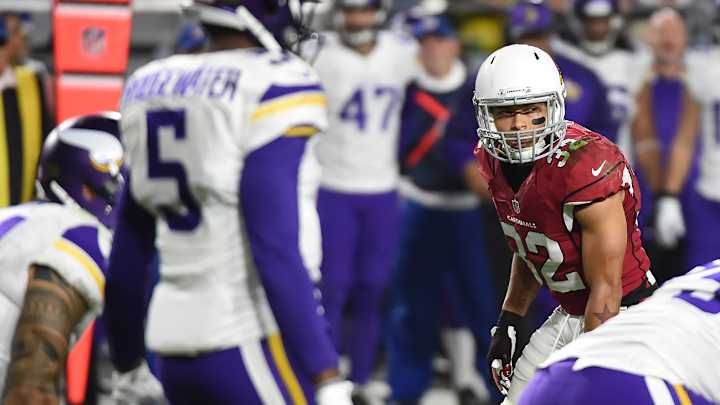
In early August, Tyrann Mathieu sat at a conference table in the Cardinals’ team hotel, wearing a gray suit and red tie, signing and initialing his new contract extension. Michael Bidwill, the team president, sat next to Mathieu, handing him page after page. A few of Mathieu’s family members sat behind them, watching patiently. After a while Bidwill joked that Mathieu would need rehab on his wrist after signing his name so much.
When they finished, Bidwill shook Mathieu’s hand, congratulated him, and reminded him of their goals: more Pro Bowls, multiple Super Bowl titles, another contract in a few years. This deal signified that Mathieu was one of the faces of the team. Bidwill turned back and congratulated Mathieu’s parents, too. “He’s earned every bit of it,” Bidwill told them.
During the contract negotiations, though, there had been much discussion about what Mathieu was exactly worth. Not only was he coming off an ACL injury, but the market had determined that cornerbacks typically made more than safeties, and it wasn’t clear which position—and therefore which salary bracket—Mathieu fit. The Cardinals list him as a safety because that’s where he plays in their base 3-4 scheme. But during the 2015 season he spent the majority of his snaps as the nickel corner, also known as slot corner, playing inside on nickel packages, often over the slot receiver. It’s a position the general public still perceives as reserved for a backup.
Mathieu and his agent looked for a player to compare him with, someone whose contract they could use as a benchmark. That was difficult because of Mathieu’s versatility—and perhaps because the slot corner is in the process of being redefined.

For one, it’s essentially a starter’s position now. As offenses spread out and play more three-receiver sets, defenses have naturally played more nickel defense. Teams used slot corners on 63 percent of all snaps last season, according to Pro Football Focus, and that number is still trending up. Also, as offenses evolved and started moving their top receivers and athletic tight ends in the slot to create mismatches, defenses responded by turning the slot corner into a roving weapon, moving him around the field like a queen on a chessboard. The modern slot corner may be asked to guard a shifty Julian Edelman or a monstrous Rob Gronkowski. He may contribute in the run game. Or blitz the quarterback. On any given play, he may have to act as a pass-rusher, a linebacker or a shutdown corner.
The Cardinals deemed slot corner so important they often stick Mathieu, their most dynamic defender, there. (Though Mathieu has played there less often in the early part of this season, it’s still an element of his repertoire.) Mathieu excels in every phase of the position, and especially as a blitzer. At 5’9”, 186 pounds, he may not appear intimidating. But his speed and power, packed into that small frame, with a low center of gravity, creates a lot of force. As Mathieu shoots off the edge, he’s aiming for “the mesh point,” where the quarterback will be handing the ball to the running back—and where he can cause the most disruption. The goal is to be moving so fast off the line that a kicking tackle or a pulling guard will have trouble catching him.

“He’s so elusive at the point of attack,” says cornerback Patrick Peterson, Mathieu’s teammate at LSU and with the Cardinals. “The way he can move and control his body to get around the blocker, I haven’t seen nothing like it. He kind of has that Von Miller presence, but as a nickel back, blitzing. He can bend his body certain ways. He can beat a guy with speed, power.”
Mathieu understood that he wouldn’t make Von Miller or J.J. Watt money, the kind of big bucks teams pay elite pass-rushers. “Those guys are just going to break the bank,” he says. Instead, Mathieu compared himself to Luke Kuechly, the Panthers’ All-Pro middle linebacker, a smart, instinctual player and the heart of Carolina’s defense. “I saw his deal and I was like, that’s the money I want,” Mathieu says. “Playmaker money, if that makes sense.”
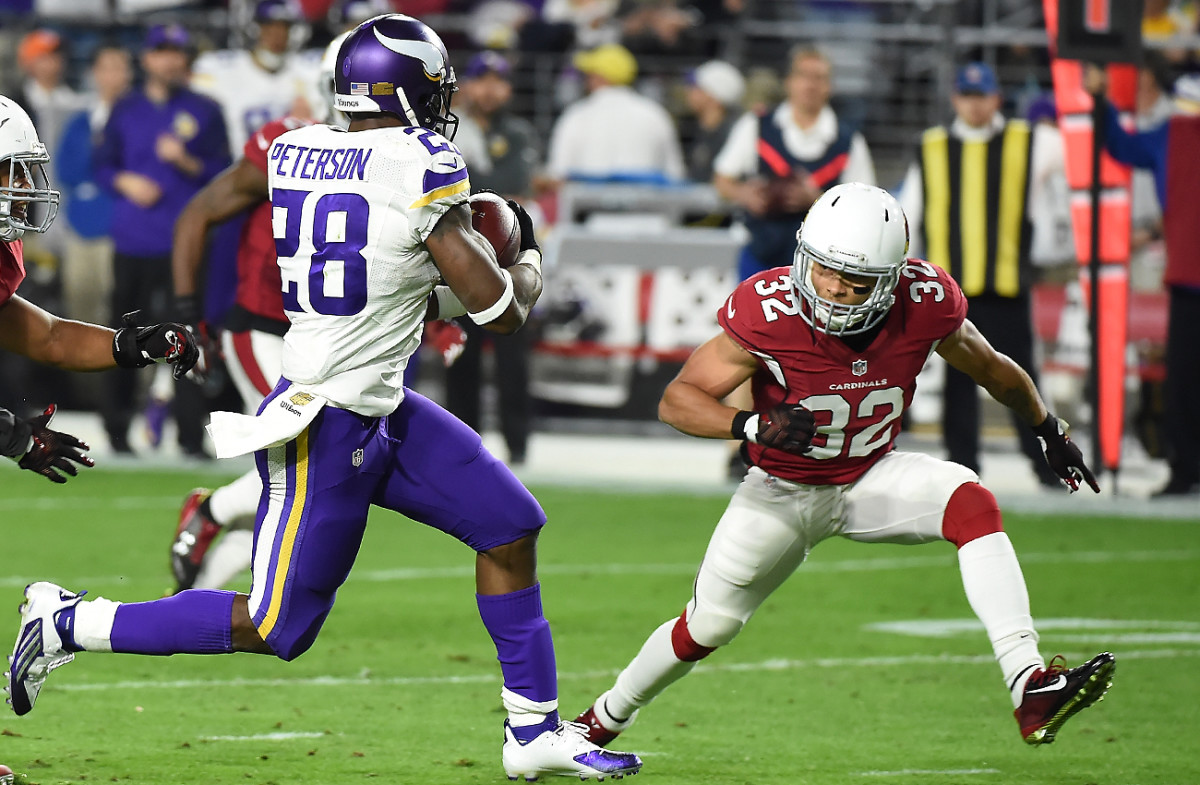
The contract Mathieu signed that day in August was a five-year, $62.5 million extension, with $40 million guaranteed—on a par with the five-year, $62 million extension Kuechly had signed a year earlier. The new deal made Mathieu the top-paid safety in the league and put him within shouting distance of the top-paid corners, shutdown men like Darrelle Revis, Richard Sherman and Patrick Peterson.
Not bad for a slot guy.
* * *
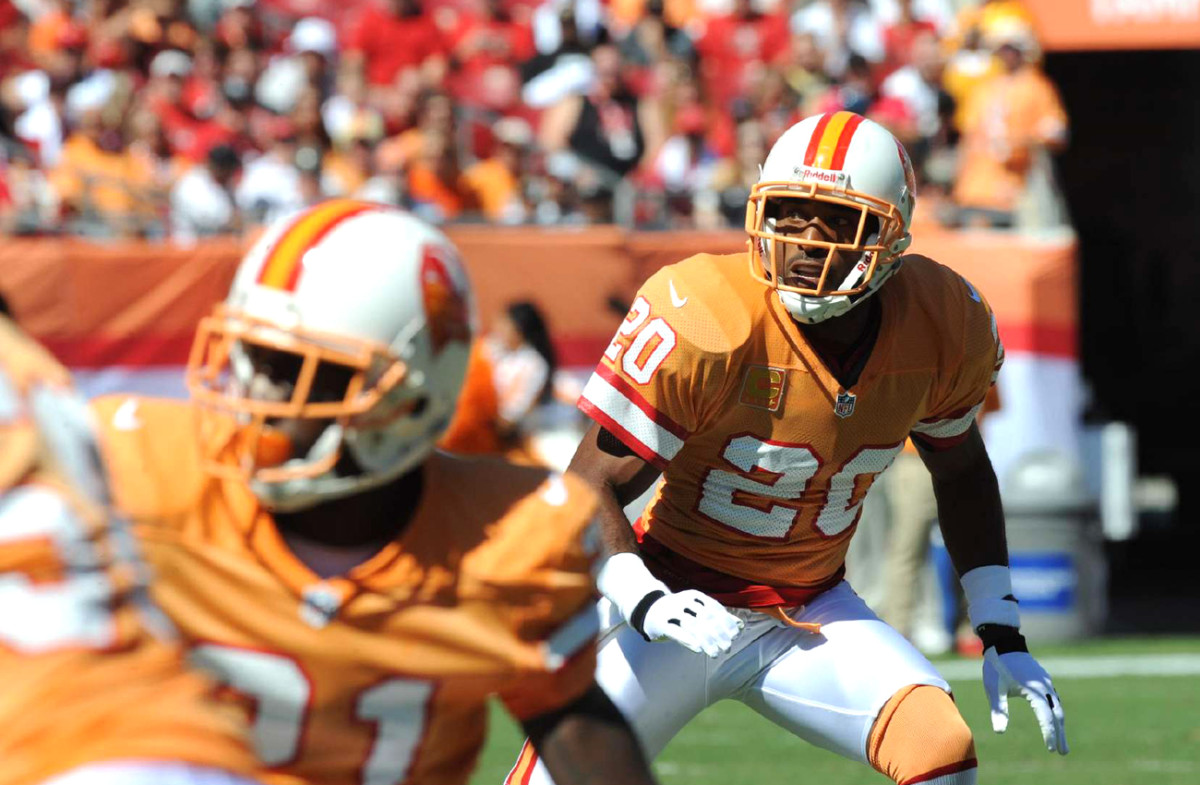
The modern slot corner may have been born out of a meeting between Ronde Barber and Lovie Smith at a Tampa Bay Buccaneers facility sometime around 1999. The Bucs had been trying Barber in a new role: starting him at outside corner in their base defense and sliding him inside in the nickel package. They found, though, that offenses were still able to run effectively when Tampa had three corners on the field and one fewer man in the box.
The Bucs’ defensive coaches, led by the visionary Monte Kiffin, decided that, in response, they would teach Barber to play the slot corner like a linebacker. Lovie Smith, the linebackers coach, met with Barber and taught him the terminology the linebackers used, the visual keys they looked for, how to read a developing run play—similar to how the Cardinals would teach Mathieu the slot position some 15 years later. Back then, Barber had to learn how the entire defense worked, which was rare for a corner at the time. He might have to communicate quickly with someone at every level of the defense—linebacker Derrick Brooks, safety John Lynch, and defensive tackle Warren Sapp alike—to alert them what he would do on that particular play.
The Bucs might not have been so innovative with the position if Barber wasn’t such a cerebral player. “You can ask a nickel back to tell you about offenses, and I guarantee it will be a thousand times more [detailed] than a guy who just plays outside corner,” Barber says. “It has to be. Just because the nickel back is getting so much more information.”
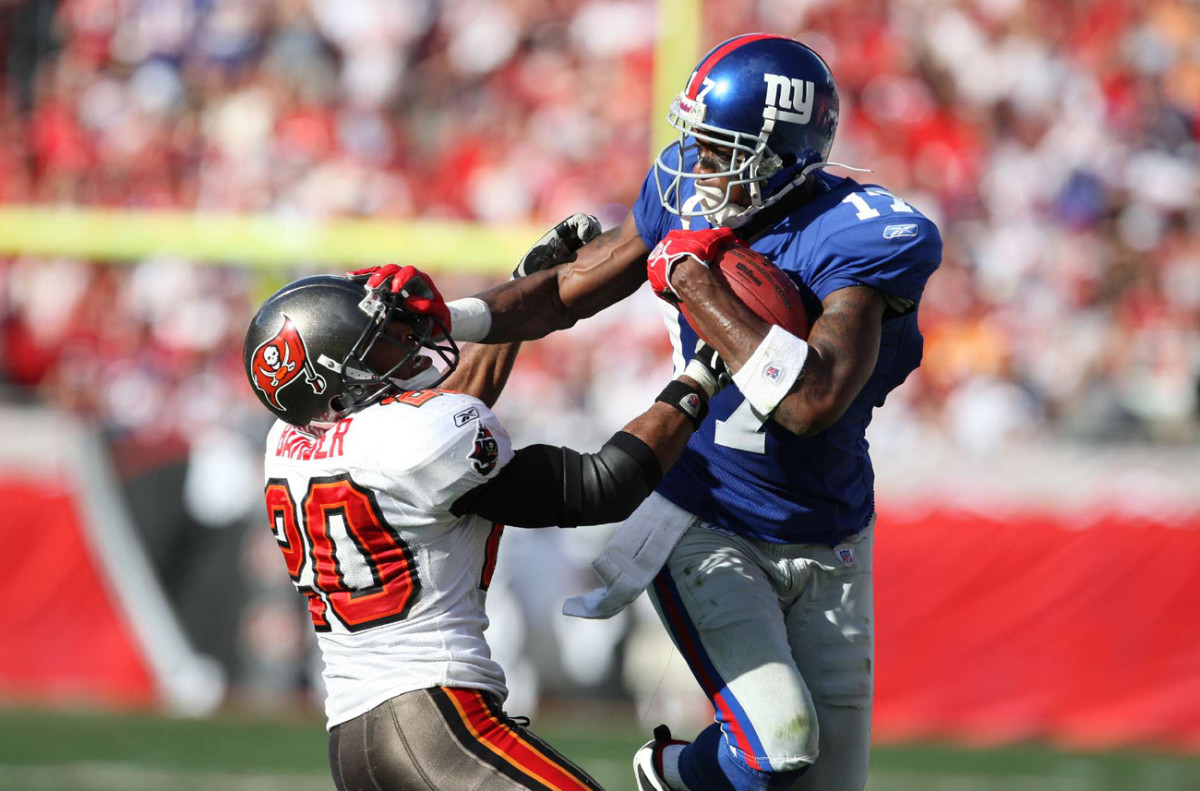
Barber needed a year or two before he felt comfortable with all that information. Kiffin had him do slot-corner-specific drills in practice, blitz drills, run-read drills. Then Barber watched film after practice, after games, for hours on end. He looked for tendencies in the opponent, those keys he needed to hone in on: the pre-snap formation, the quarterback’s eyes, the play unfolding. He watched film of the Bucs’ own practices, too, comparing it to game film. Were his eyes in the right place? Did he read the play correctly? Did he react the right way?
“My mentality was: I’m a smaller version of Derrick Brooks,” Barber says. “[Playing nickel] is just like linebacking. It’s all about your keys. Follow your keys, and your keys take you to the play. Don’t try and see everything; just try and see aspects of [the play]. The good ones do it well. The bad ones have bad eyes and end up all over the place.”
At the time most teams simply put their third-best corner in at nickel on third downs and prayed they could hide him on the opponent’s third-best receiver. Convention said that most top receivers around the league back then—Terrell Owens, Randy Moss, Torry Holt—played outside and stayed outside. The best corners naturally played on the outside, too.
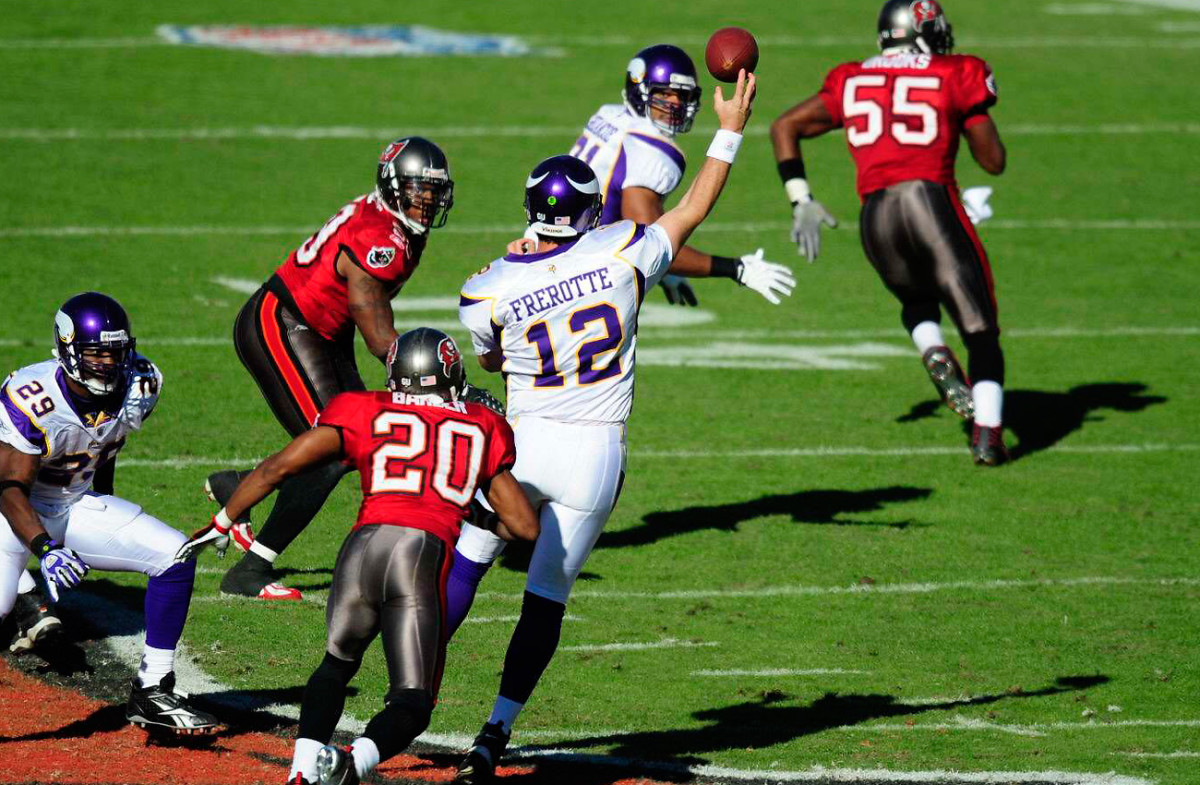
Then Barber started wreaking havoc from the slot, blind-siding quarterbacks and smothering running backs in the backfield. Other elite corners started moving inside, too: Samari Rolle, Antoine Winfield, Charles Woodson. Like the best of them, Barber mastered the position so well he could disguise his plan, pop around the field and toy with his opponents. Like when he faked a blitz, intercepted Donovan McNabb and returned it for the game-sealing touchdown in the 2003 NFC Championship game, the year the Bucs won it all.
That was not the interception that Barber was perhaps most proud of, though. The Bucs were facing the Colts on a Monday night, in Tony Dungy’s return to Tampa. Trailing by 14 points in the fourth, Peyton Manning had the Colts in the hurry-up offense. One play, Barber and Brooks found themselves lined up on the wrong sides of the defense, and as the Colts rushed the tempo, they didn’t have time to switch. Brooks had to play the role of Barber, and Barber of Brooks. Barber picked off Manning for a touchdown. All that studying had paid off.
* * *
Chris Harris Jr., whom many consider the best slot corner in football today, went to Kansas, wasn’t invited to the combine and went undrafted in 2011. Then the Broncos invited Harris to training camp, and Champ Bailey became his mentor. They watched film together, Bailey teaching Harris technique. They ate steaks at Del Friscos. They hung out at Bailey’s house, watching more football, Harris soaking up as much info as he could.
The Broncos were asking Harris to learn both the outside corner and slot corner positions so he could eventually move back and forth freely. With the help of Bailey, arguably the best cover corner of his generation, Harris became a full-time starter his second year, making an immediate impact in the slot. A year later, the Broncos approached Bailey about playing a bit in the slot himself. “He actually came to me for advice,” Harris recalls, smiling wide. “That was kind of crazy.”
Bailey, a 15-year veteran, had not played much in the slot at all. Not every outside corner is comfortable playing in the slot, and vice versa. Outside corners are typically tall and rangy because they need to cover tall, rangy receivers. Slot corners are typically quick and agile because they need to cover smaller, shiftier receivers. Few corners posses all those traits.
“You can be a shutdown corner outside,” says Kiffin, the defensive coordinator who mentored Ronde Barber as a slot corner in Tampa Bay. “You can be an All-Pro corner. Not taking anything away from you, but to go inside and play nickel you need to be special.”
That’s because playing in the slot has a distinct set of challenges. Unlike an outside corner, the slot doesn’t have the sideline as a boundary. The slot receiver can use the whole field to run essentially anything in the route tree, and the offense takes advantage with “option” routes in which the receiver can run multiple ways depending on how the defender covers him. The slot receiver is also the receiver closest to the quarterback and is often a hot target for a quick pass. Because of that, the slot receiver and corner are also usually jostling in the back judge’s line of sight, so the slot corner can’t play overly physical.
If you ask for his advice, this what Harris says. Coming off the line, he gets his hands on the receiver and disrupts the route while it’s still legal within five yards. “Everything is about timing, and they run a lot of option routes,” Harris says of offenses. “The quarterback has to read it. If you can put your hands on the receiver and get to him fast, that messes up everything for them. If I don’t put hands on him, he’s probably going to beat me on the route.”
All the while, Harris is very conscious of his footwork, keeping his shoulders square and the receiver in front of him. If he turns his hips and “opens the gate,” as he puts it, and lets the receiver run free, he will get beaten that way, too. In practice, Harris does a specific drill that helps his footwork. He positions one receiver in front of him and another behind, mirroring the first receiver for about five yards, and then flipping around and covering the other.
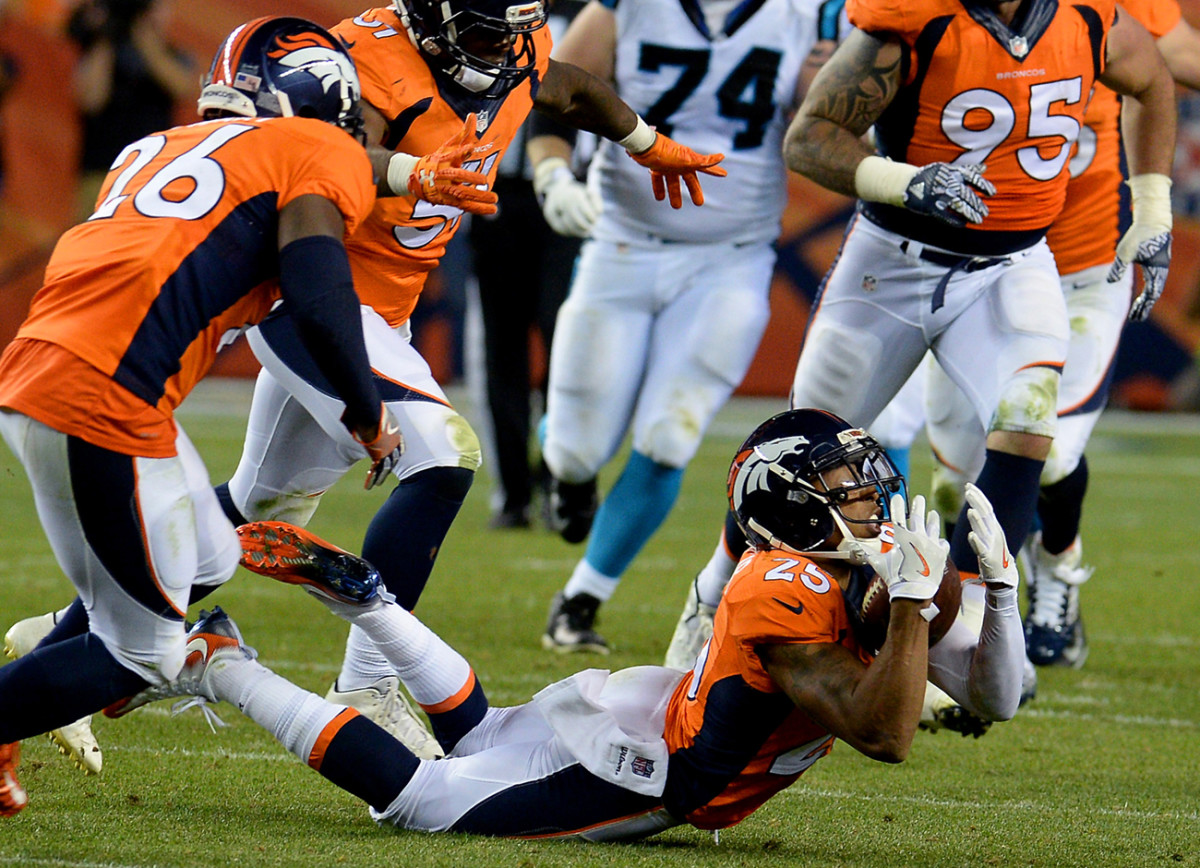
As the receiver heads upfield, Harris is close enough to him that he can sense, to a degree, where the route may be heading. Harris has a decision to make. With all that field to work with, the receiver can go inside or out: Which side is Harris going to take away with his leverage? Harris walls the receiver from going one way and then prepares himself to jump the other way and stay in stride. This is the way Ronde Barber played and is a basic tenet of the slot corner position. “I try to make it the hardest throw for [the quarterback],” Harris says. “You have to take something away, because you can’t cover all the routes from the slot.”
The position requires a certain amount of bravado and courage, especially since teams now often move their top receivers into the slot to exploit matchups. After the Broncos’ Week 3 win over the Bengals, when they held A.J. Green without a touchdown, the Denver defensive backs were carrying on in the corner of the visitors’ locker room, hooting and hollering, when someone brought up Josh Norman and his matchup that day with Odell Beckham Jr.
The Redskins were having Norman shadow Beckham everywhere—except the slot. Pundits had skewered Norman for it. Norman had a $75 million contract, and, it was said, as the highest paid corner in football he should cover Beckham everywhere.
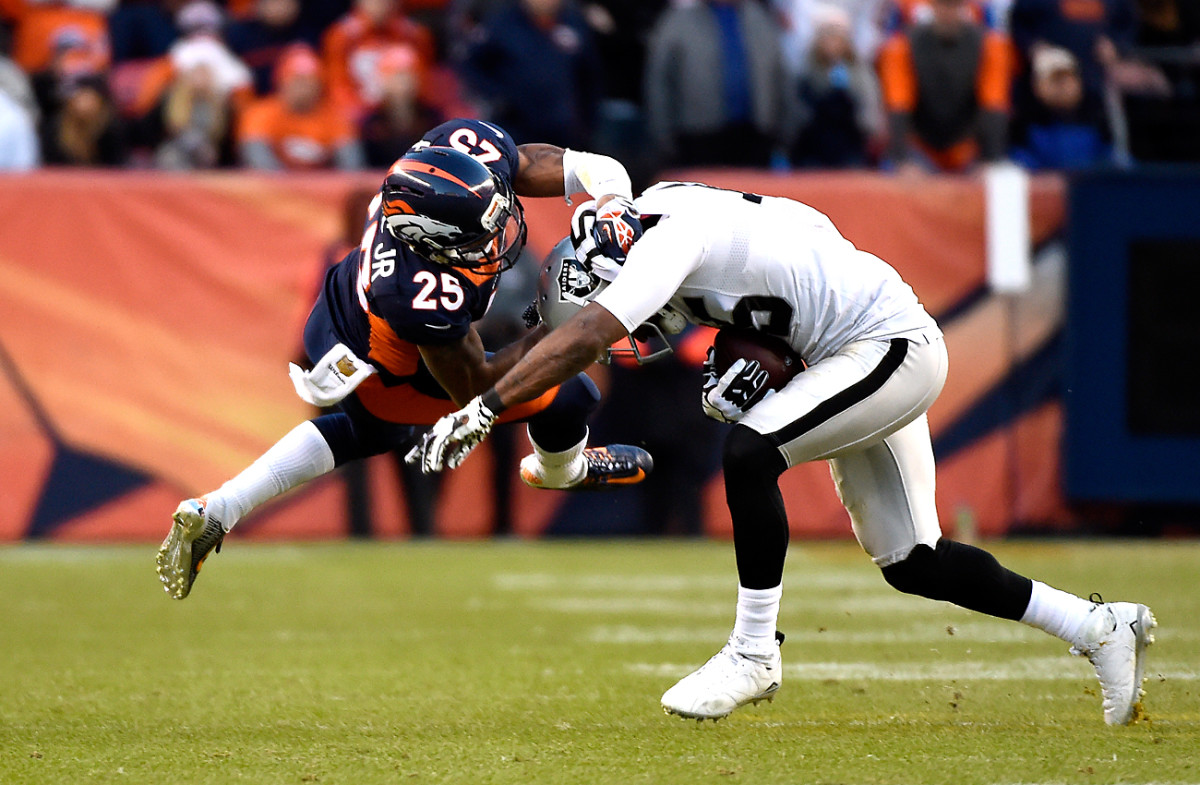
“What were Odell’s numbers?” Harris shouted. Beckham had caught seven passes for 121 yards but scored no touchdowns and threw a tantrum on the sideline in a Giants loss.
Harris had an opinion about Norman not playing the slot. “I mean, I guarded [Antonio Brown] and I had to cover him everywhere,” Harris said, “You know what I mean? Left, right, slot—it doesn’t matter. Wherever he goes. If I have to cover T.Y. Hilton like I did last week, I cover him outside and in the slot. The best corners can play everywhere.”
* * *
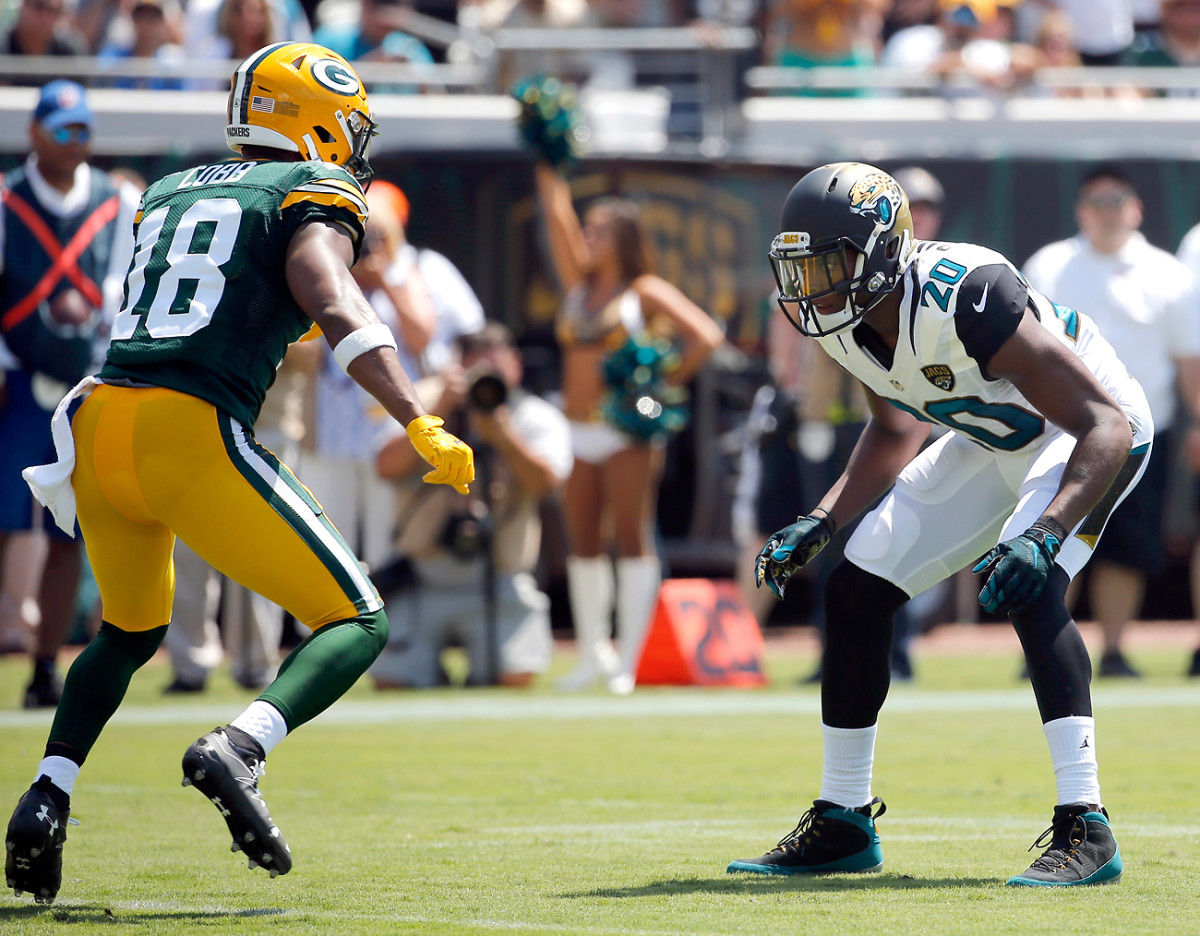
The next great slot corner may be a member of this year’s draft class: Jalen Ramsey. He’s 6’1”, strong and athletic, and played some slot in college at Florida State. The Jaguars took Ramsey fifth overall in this year’s draft, making him the highest-drafted defensive back since 2011. They envisioned him playing outside, inside, everywhere. They’ve started using him as a version of Ronde Barber and Chris Harris, as a corner who starts outside and slides into the slot.
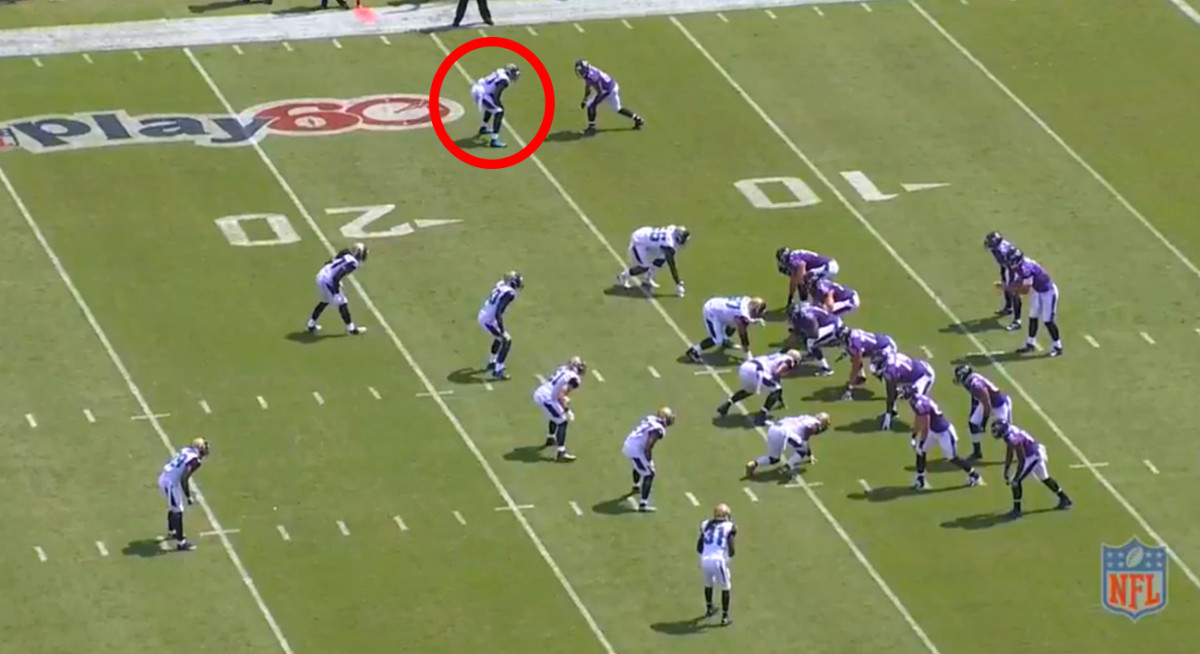
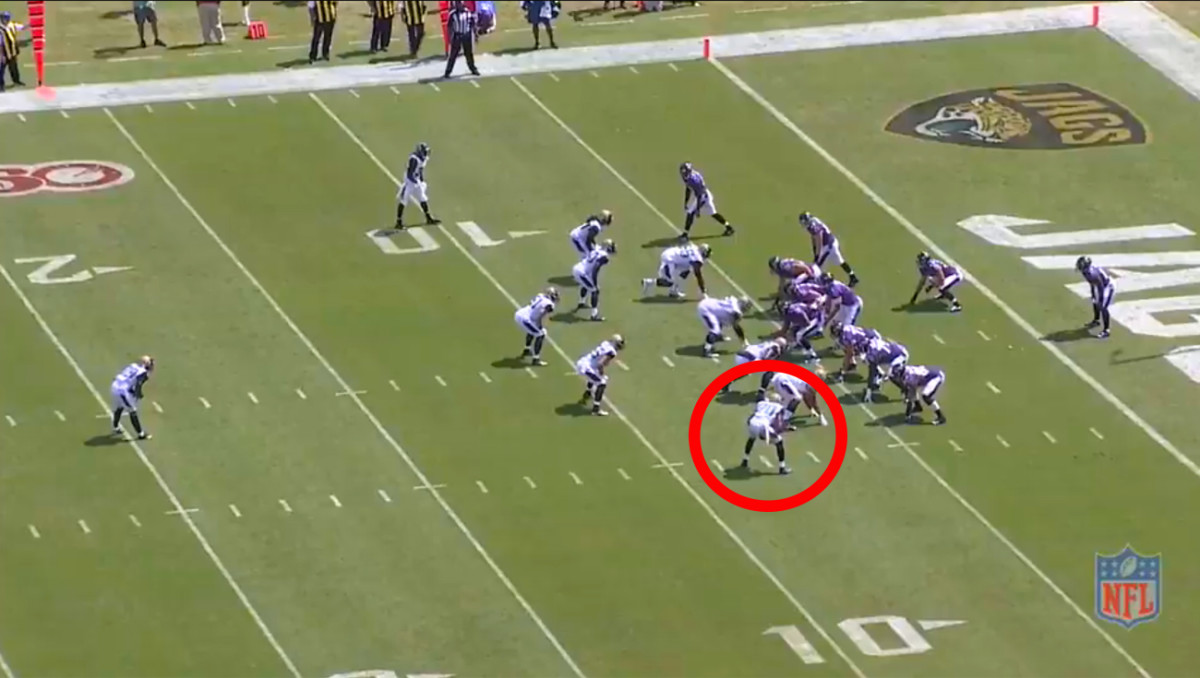

Ramsey is also learning under Monte Kiffin’s watch. At 76 years old, Kiffin is working as defensive consultant for the Jaguars now, and has been impressed with what he’s seen from the rookie so far. “I’m not saying he’s Ronde Barber,” Kiffin says, “but he has a chance to be a really good nickel. Not yet. He has a chance to be really good at it. He’ll be able to man-to-man on slot receivers, and, because of his speed and size, I think he’ll be a force as a blitzer.”
The question, in Kiffin’s mind, isn’t whether Ramsey can handle playing outside. Becoming proficient in everything a slot corner does—that will be the real challenge. “It takes time,” Kiffin adds. “The nickel is not easy.” Ramsey is no Barber, no Harris. Not yet anyway.
Question or comment? Email us at talkback@themmqb.com.
